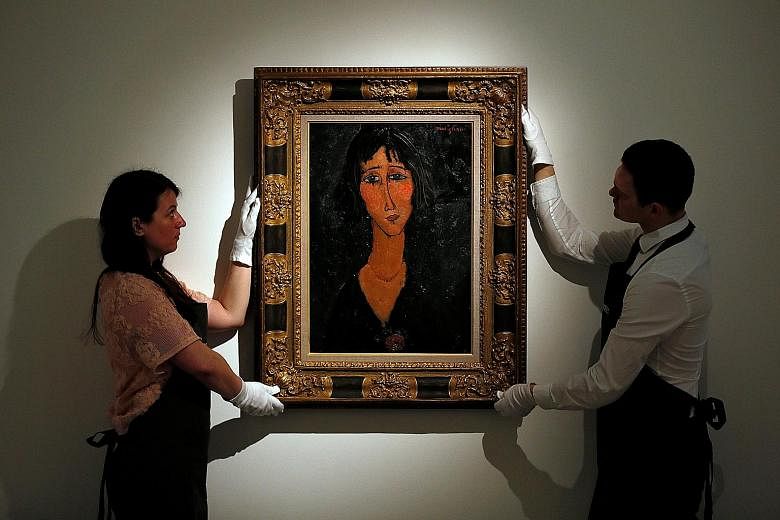If you are new to art collecting, art gallerists, art auction houses, art advisers and art dealers can help you build up a collection and offer guidance on works that have a chance of appreciating in value over time.
However, many of these art industry professionals will caution against collecting art for the sole purpose of financial investment because it is an illiquid asset and its value is influenced by changing tastes and trends.
Ms Alice Zou, art adviser and gallery owner of the Asian Art Platform, says: "When it comes to art investment, we always tell our current or potential clients to focus first on buying art that they love as this is the only way to ensure they avoid disappointment."
So do not expect to be handed a list of artists and works to collect for a promised return on investment. Christie's Asia vice-president Wang Zineng says: "We don't have buy calls or sell calls. The works that pass through Christie's are collectables."
The international auction house, however, does cater to those new to art collecting and investing, and Mr Wang recommends they speak to one of its art specialists at the preview shows held twice a year, in May and November, ahead of the spring and autumn auctions.
If you decide to go with an art gallery for advice, opt for one with a good track record of promoting the artists it represents and selling works that appreciate in value over time, says Mr Cruz Phua, managing director of The Art Fellas gallery.
Or if you prefer help from a neutral party that does not stand to gain directly from your acquisition, consider art market indices and databases, which typically track art auction sales. They are available online and provide information on an artist's market performance and market trends. Go to websites such as Artprice (www.artprice.com) and artnet (www.artnet.com).
To make sense of the data, it may help to have an art specialist, art consultant or fund manager interpret it, says Ms Lindy Poh, a partner at Silver Rue Art Consulting.
These indices, however, are not without bias. They do not, for example, take into account private sales or works that do not sell at auction.
For eager investors, art may be an alternative asset class, but to collect art for the sake of investment, one may be short-changed of the priceless pleasure of enjoying a thing of beauty.


